Introduction
Rhomboid muscle pain relates to Rhomboids muscles, also known as rhombic muscles, are rhombus-shaped muscles connected to the scapula.
They are two in number, i.e., rhomboid muscles on each side of the upper back: The large rhombus-shaped muscle, located under the trapezius muscle in the upper part of the thorax region of the back, and also the tiny muscle in the same way, participate in the movement of the scapula. Moreover, rhombic discomfort is felt under the neck, between the shoulder blades and the spine.
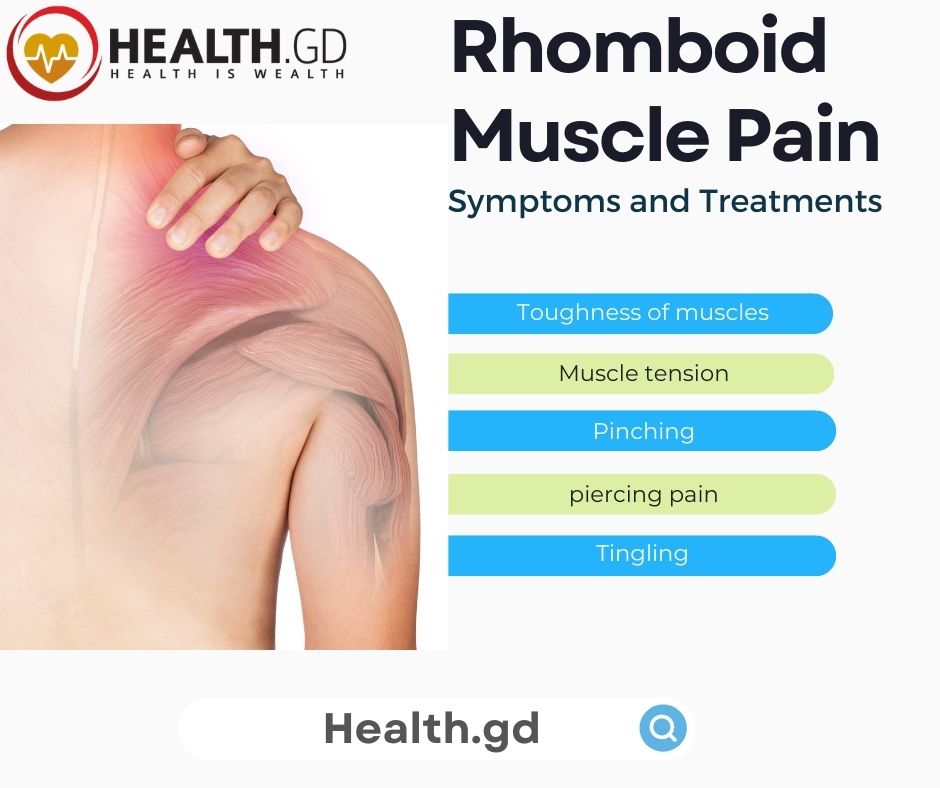
Upper back discomfort or shoulder blade pain are some names for it. This region of discomfort might cause a strain, a shooting pain, or a kind of spasm.
Tenderness in the upper back area is one of the additional signs of rhomboid muscle pain. Stiffness, edema, and muscular knots surrounding the muscle, loss of mobility, difficulty or pain when moving a muscle, and breathing difficulties or pain while moving the shoulder blade
The mid-upper back, the backs of the shoulders, or the area between the spine and the shoulder blade can all experience rhomboid muscle pain. Additionally, the size above the shoulder blade is where it is felt.
Symptoms of Rhomboid muscle pain
Arm and shoulder discomfort can result from overusing the rhomboid muscle. Tennis, golf, and rowing are a few sports that might aggravate chronic aches. This soreness can also be brought on by jobs and activities that demand you to move essential things, carry big bags, or raise your arms over your head for extended periods. Rhomboid muscle discomfort often manifests as pains or tension in your upper back region between your shoulder and spine.
It includes below
- Rhomboid muscle pain symptoms might include:
- Toughness of muscles
- Muscle tension
- Pinching
- piercing pain
- Tingling
- Numbness
- needles and threads
- suffering from popping or clicking noises
- difficult breathing
Treatment of Rhomboid Muscle Pain
You can also use topical painkillers for the afflicted region, such as lotions, gels, and sprays. Also,topical painkillers like diclofenac (Voltaren, Solaraze) and Salicylates are believed to decrease the risk of adverse effects. It is due to the medication bypassing the digestive system and absorbing less of the substance into the blood.
1. Heat and icing shoulders
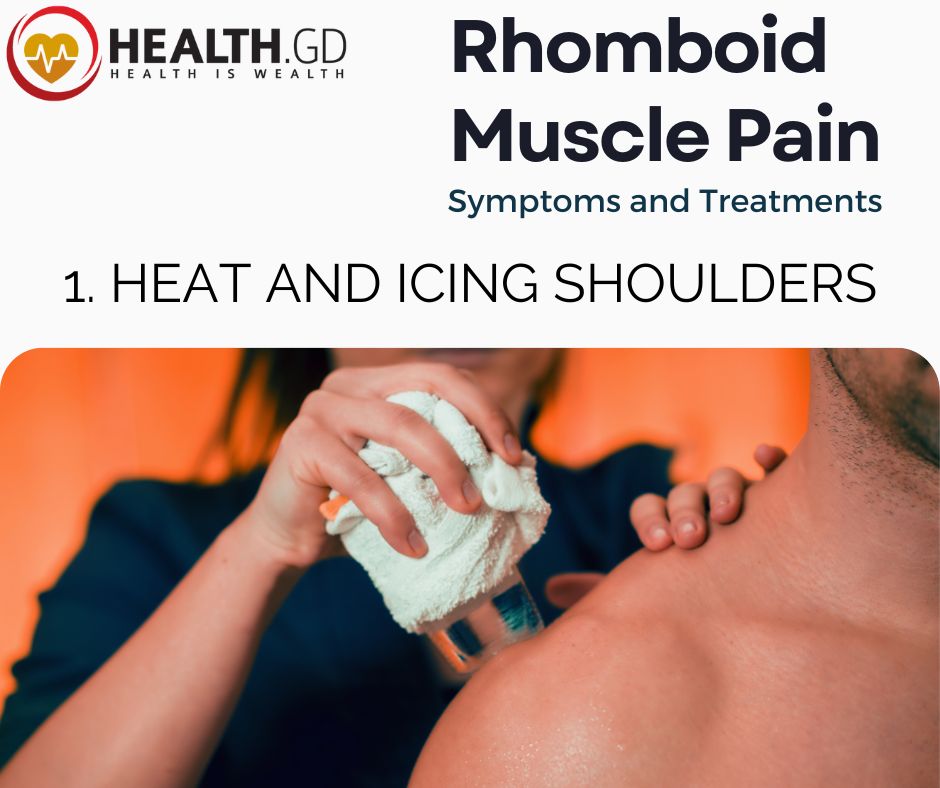
You might want to use heat on your shoulder after icing it for a few days. You can use a warm compress or a heating pad. Apply the heat source repeatedly throughout the day for 20 minutes. Also, During treatment, we can alternate hot and cold therapies.
You can benefit by reducing it from consulting a physical therapist if you’ve tried home remedies for rhomboid muscle discomfort without success. They can give you exercises to reduce shoulder discomfort and stop it from returning.
You’ll heal more rapidly if you rest and refrain from any activity that makes your rhomboid muscles hurt. The RICE technique is the initial line of treatment:
Below are the suggestions one must make while having muscle cramps.
Rest. Rest your shoulders and arms as much as you can. Any actions that use these muscles should be avoided.
Ice your shoulder for twenty to thirty minutes at a time, several times a day. Ice the injured region immediately following a strain or other injury.
Compression. To lessen swelling, bandage the region in reduction.
While lying down or sleeping, you must keep your shoulder and chest up or supported by utilising soft pillows.
In addition, the severity of the strain will determine how long it takes for rhomboid muscle discomfort to go away. The majority of minor sprains will recover in three weeks. Healing from more severe strains may take several months.
2. Avoid heavy lifting
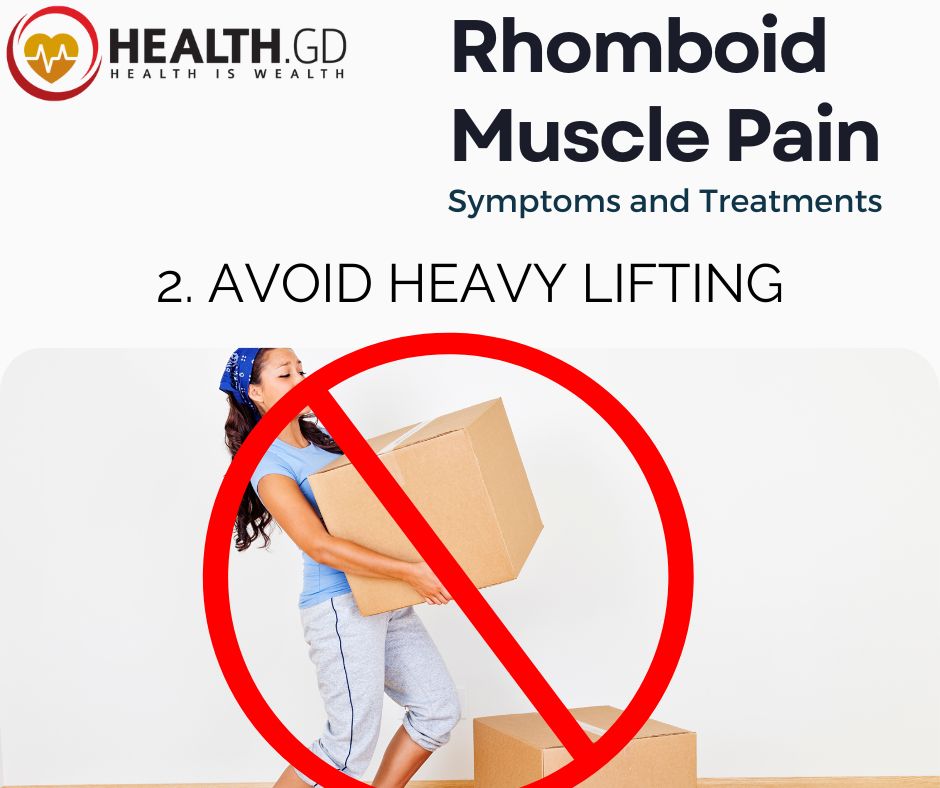
One should avoid Heavy lifting and vigorous activity during recovery. Once you feel recovered, gradually resume your normal activities. After a time of relaxation, pay close attention to how your body reacts to physical activity. If there is any discomfort or suffering, pay attention to it and act appropriately. Firstly, avoid lifting anything too heavy, and if you must, use good technique. Secondly, one must never use one shoulder to carry a hefty bag. It would be best if you used both shoulders.
Furthermore, keep a healthy weight, keep in shape, and routinely stretch and exercise. Moreover, maintain proper posture while standing, walking, and sitting. During prolonged hours of sitting, take regular pauses to get up, walk, and stretch. Lastly, wear safety gear when doing sports and working. If you don’t see any progress, consult your doctor. Chronic strains could benefit from physical treatment.
3. Rhomboid muscular discomfort and medical issues
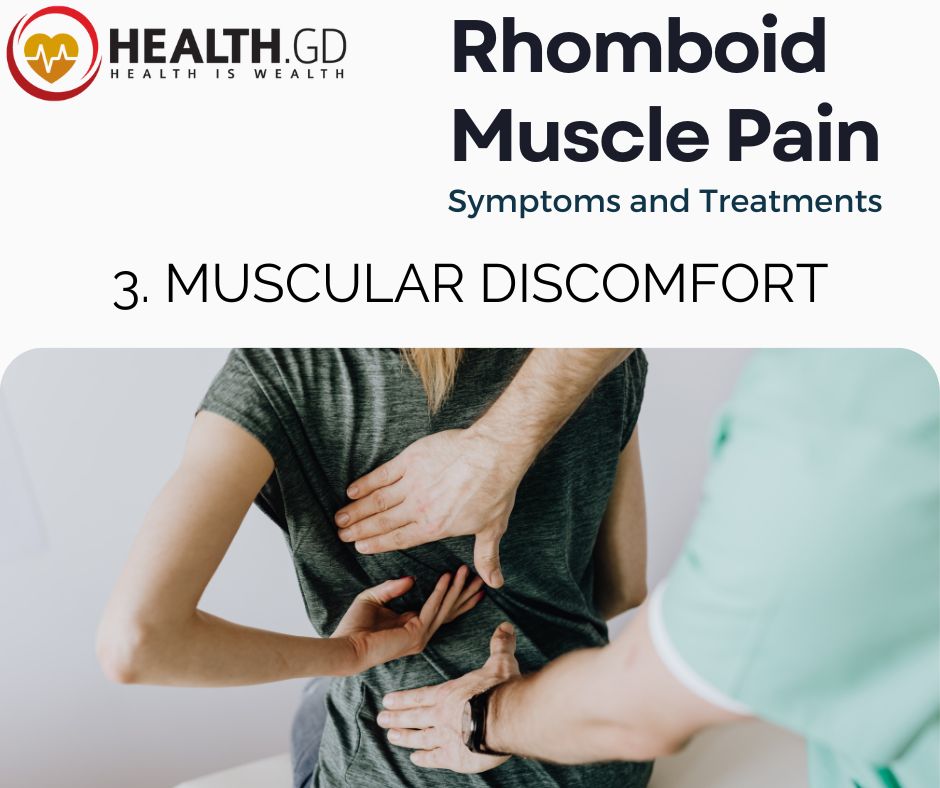
Rhomboid muscular discomfort can also result from some medical issues. Myositis. Muscle inflammation and deterioration may result from this disorder. Your shoulders and hips are typically where it initially manifests. Rheumatic polymyalgia: This condition results in stiffness and discomfort in the hips and shoulders. Typically, those over 50 are affected. Moreover, both sides of your body may be affected by the pain and stiffness, which may be greater in the morning.
Osteoarthritis: A degenerative bone condition called osteoarthritis results in cartilage loss. Pain and stiffness may result from this. Your shoulder may not move all that much, which can make the muscles around it uncomfortable.
Arthritis rheumatic. Your immune system attacks your joints as a result of an autoimmune illness. It typically results in severe discomfort, edema, and the potential for joint abnormalities. Your shoulders may be impacted by rheumatoid arthritis, which may also affect your rhomboid muscles. To reduce and lessen the pain, try to do the following things.
You’ll look and feel better, perhaps even thinner. To determine your height:
- Your chin is in that position that keeps your head straight. The centre of your shoulders should be where your ears should be.
- Stand tall with your back straight, legs straight, and tuck your tummy in.
- Do not expose your hips or booty.
- Adjust your posture so that you appear to be stretching your head upward.
4. Exercise and suggestions to relax the muscle pain
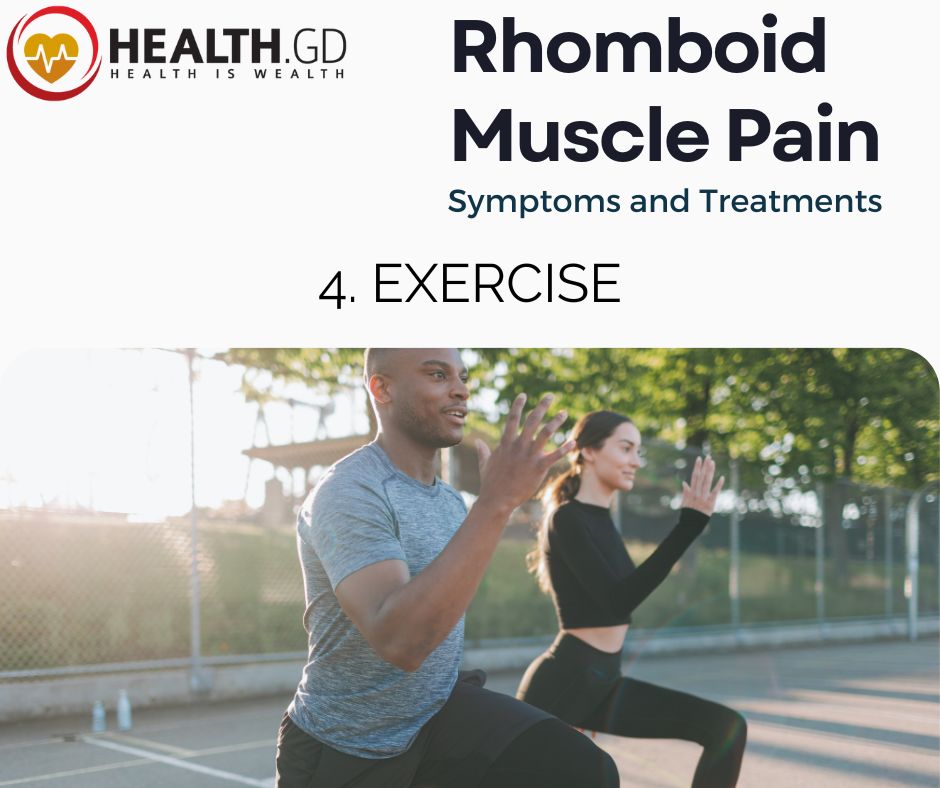
Reverse the position of your chair. To support the natural bend of your spine, place a small, rolled-up towel or lumbar cushion behind your mid-back. Keep your knees at a straight angle, bent and around the same height as your hips or slightly higher. Put your feet firmly on the ground. Stretches to prepare are by warming up and stretching before and after activity; those exercising or participating in sports may help protect their muscles. Allow your muscles to rest if they are tired from a recent workout and concentrate on a new group of muscles. Frequent pauses. Take lots of breaks if you spend most of the day sitting at a computer. Move around while standing up and stretching.
Before beginning these workouts, you might need to take some time to relax. Additionally, reach gently forward while extending your arms out in front of you to feel a little stretch between your shoulder blades. Additionally, maintain this position for 30 seconds without switching to the other side. On each side, repeat this stretch twice with a tennis ball. A tennis ball should be placed beneath your shoulder while lying on the ground. Roll the ball gently with your shoulder as you move it back and forth. Reverse positions and continue. Sponge roller Roll a foam roller over your shoulder while lying on the ground.
Conclusion
Rhomboids are rhombus-shaped muscles attached to the scapula and are also referred to as rhombic muscles. The enormous rhombus-shaped strength is situated beneath the trapezius muscle in the upper portion of the thoracic area of the back, and the little muscle is the rhomboid muscle. It would be best to alter or refrain from engaging in painful activities until your muscles have recovered. For instance, you might have to forgo playing tennis or rowing in favor of running or riding a bicycle. To aid your recovery, your doctor may advise strengthening and flexibility exercises and other forms of physical therapy.
While a significant injury would require six weeks or longer to recover, a slight rhomboid strain might do so in a few weeks.
Resuming your regular activities gradually when you feel better. After some downtime, pay attention to how your body responds to exercise.








